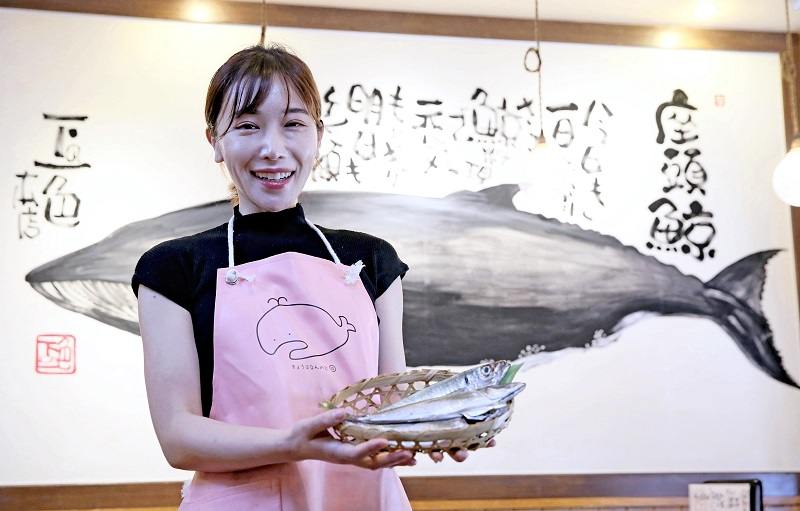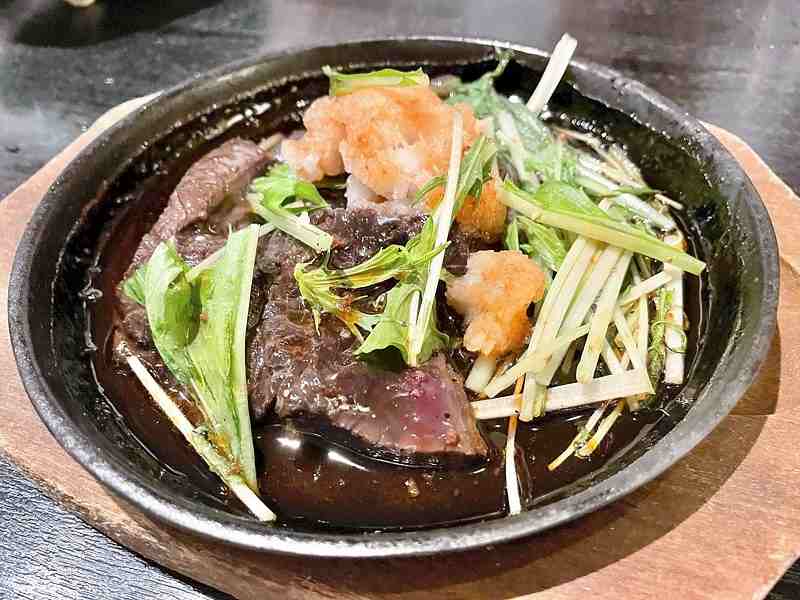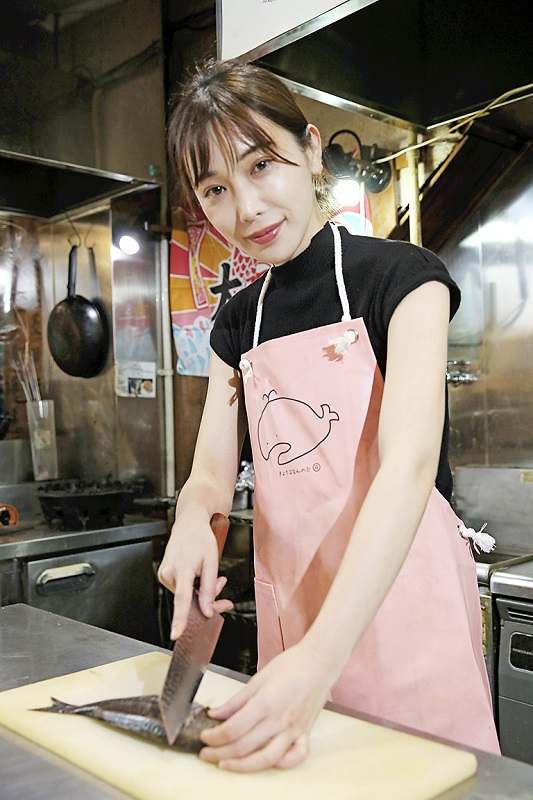Fishmonger uses YouTube to promote seafood

Nature’s bounty: Asana Mori with the catch of the day
13:00 JST, August 16, 2022
Fishmonger Asana Mori is promoting seafood through videos on YouTube, at a time when consumers are buying and eating less of it.
She has about 270,000 subscribers to her channel, named “Sakanaya no Mori-san” (Mori the fishmonger).
Mori, 35, is managing director of Kotobuki Shoten, a fish retailer and wholesaler in Nagoya.
She joined her father’s business after graduating from university and working for a major tech company.
“I want to preserve the fish-eating culture,” Mori said. “I expect many people to sympathize with me as I joined the industry as an amateur who likes cooking and eating fish.”
Fresh ideas
Fish shop workers are early risers.
Mori goes to the market around 5 a.m. with her father, Takashi Mori, who is the company’s president. They buy various fish, return to their workplace, unload the fish that have been packed in ice from the vehicle, and make arrangements to have them processed for cooking. Then, Mori does some clerical work and cooks at restaurants operated by the company.
During work breaks, she records videos to be posted on YouTube.
When she was a child, she often saw and heard her father’s customers tell him happily that the fish he recommended had been really tasty. She thought he was the coolest.
In her elementary school graduation album, she wrote that her dream was to be “my parents’ successor.”
She went on to study at Waseda University’s School of International Liberal Studies, which requires students to have a high level of foreign language skills.
Her choice of school was based on something that happened when she was a sixth-year student in elementary school. The family was to go to Hawaii to celebrate her success in the entrance exam for a private junior high school, but her father decided not to join them due to his routine of buying fish.
“Could you come if you had work overseas?” she asked, and he answered: “It’s a good idea. It’d be nice if I could spread Japanese food culture overseas.”
She decided then to learn English in the future to prepare for an expansion of the business overseas.
After graduating from university, she joined major online retailer Rakuten Group, Inc.
“My father started online sales of fresh fish, but it didn’t go well,” she said. “I thought that I could contribute to my family business if I learned to do what he couldn’t.”
She returned to Nagoya when she was 24 as her father became ill.
She started as a part-time worker for the company’s restaurant division. After becoming a regular employee, she began reforming the company’s business system.
At the time, the company bought fish by communicating with its outlets via phone and fax. The process took a lot of time. In addition, her father sometimes made purchases by intuition, which occasionally caused products to be out of stock.
To improve the situation, Mori introduced an online system connecting the outlets with each other and placing orders for fish they needed collectively.
She also promoted whale meat products, which the company had much confidence in. They had received few orders, but due to her efforts, these became flagship products in demand today.

Whale steak, cooked rare, has become a popular menu item.
She also demonstrated her energy and ability to act amid the coronavirus pandemic, which caused the entire restaurant industry to slump.
In the spring of 2020, the market was full of fish at lower prices as no one was willing to buy them.
Her company bought the fish and sold them as Omakase Sengyo Boxes, an assortment of fresh fish that is processed and prepared for cooking, via its online shop.
Assisted by the strong demand from people staying home, monthly revenue from this product at times more than compensated for the decline of revenue in the restaurant division.
The government’s White Paper on Fisheries shows that the per capita consumption of seafood in fiscal 2020 was 23.4 kilograms, about half of the peak of 40.2 kilograms in fiscal 2001.
When giving reasons for not buying seafood in a survey, with multiple answers accepted, 45.9% of respondents said that their family members prefer meat, 42.1% said that seafood is expensive, and 38.0% said that cooking seafood is laborious.
If the situation continues, many people will end up eating the same fish in the same way. Stores will stop offering the kinds of fish that do not sell, ultimately causing the fisheries industry to shrink — with a sense of crisis over this, Mori started providing videos online two years ago.

Mori prepares fish.
Her videos feature such titles as “Let’s cook tachiuo-ju, instead of una-ju,” using grilled tachiuo cutlassfish in place of eel, served over rice, and “Recipes for small seafood dishes for drinks.” She herself appears in each video, giving explanations of each fish and tips on cooking it.
She has so far uploaded more than 200 videos. Viewers have given positive feedback, saying, “I always refer to your videos,” and “They look easy to cook.”
A fisherman told her: “We’re in difficult times. If a fish store promotes the appeal of eating fish and consumers eat more fish as a result, the situation will improve.”
Mori said: “It is meaningless if only our stores do well. I feel I’m responsible for letting people know that fish is tasty and how to eat it.
“I want to act as a go-between for producers and consumers,” she said, “and get more people to like eating fish.”



